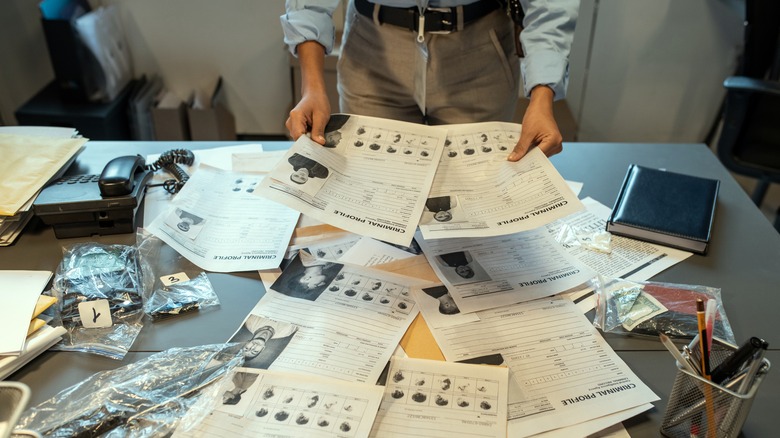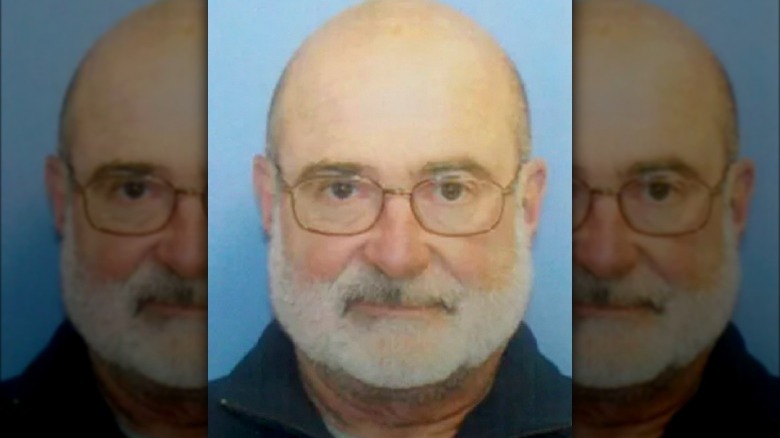Why Gregory Hopkins Was Exonerated For A Murder He Served 10 Years For
On September 1, 1979, 23-year-old Janet Walsh was discovered deceased in her apartment located in Monaca, Pennsylvania. Walsh's father found her after being notified by her boss that she didn't show up at work. According to CBS News, Walsh's arms were tied, a bandana was tied on her neck, and she was left on her bed covered by a sheet. Investigators concluded that the young woman knew her murderer. The home wasn't ransacked, there was no sign of forced entry, and her valuables were left behind, which ruled out robbery as a motive.
The night prior to her body's discovery, Walsh was in contact with her family, and they knew that she was going out for a night of fun in town with some of her girlfriends. Her friends told authorities that they were out until 2 a.m. Based on the autopsy, Walsh's death was caused by strangulation, and her time of death was approximated to be about 5 a.m., per The National Registry of Exonerations. Authorities questioned a few suspects, but it wasn't until 2012 that an arrest was made.
Some of the suspects in the case
One of the first people investigated in Janet Walsh's murder was Scott Walsh, her estranged husband. The two were high school sweethearts, and they married in 1976. However, the union didn't last. Scott had a solid alibi for the night of the murder. He went to a football game and was with a friend at the hospital until 2 a.m. on September 1 (via The National Registry of Exonerations). He then went home and was with a girl until 3:30 a.m., and he was eliminated as a suspect.
Another suspect was a man named Robert McGrail, who was with Walsh and her friends the night before her murder. As reported by CBS News, McGrail asked Walsh to drop him home, but she refused. However, his checkbook was found in the gutter near Walsh's apartment.
Gregory Hopkins was another man that authorities deemed a suspect. Hopkins built the house that Janet Walsh shared with her husband, and he admitted that he had an affair with her. However, he stated that their affair ended about a month before she was murdered. Hopkins provided an alibi, which two of his employees validated.
The arrest of Gregory Hopkins
Decades passed and Janet Walsh's case turned cold. In 2010, a cold case unit revisited her case and sent the sheet, rope, and nightgown found at the crime scene for processing. A DNA profile was obtained, and it reportedly matched Gregory Hopkins. His DNA was taken from a discarded cup of water that he used, per The National Registry of Exonerations. Hopkins, who was serving as a councilman for Bridgewater, Pennsylvania, was arrested in 2012.
The prosecution hired a well-known forensic pathologist, Dr. Cyril Wecht, to testify. In court, he said he was "quite comfortable with the fact that Hopkins was the perpetrator," via CBS News. He stated that the semen found at the scene placed Hopkins at Walsh's apartment during her murder. Furthermore, he added that it was "extremely unlikely" that the semen was deposited during their past sexual encounters when Hopkins said he had an affair with Walsh. However, Wecht said that he's not an expert in DNA, and he was hired to give an interpretation of the crime scene. The jury sided with the prosecution, and Hopkins was convicted of the third-degree of Janet Walsh in 2013. He was sentenced to 8 to 16 years in prison.
The issue with Dr. Wecht's testimony
Gregory Hopkins' lawyer filed an appeal, but his conviction was held. In 2017, his lawyer petitioned for a PCRA (Post-Conviction Relief Act) in regard to Dr. Cyril Wecht's testimony. A post-conviction relief allows a defendant to present more evidence or raise questions about the case after a trial. Hopkins' lawyer noted that his original defense team overlooked filing a Frye hearing before the trial began, as reported by The Times. In U.S. law, courts follow what is called the Frye standard, which determines whether an expert witness' testimony is "generally accepted" in the scientific community (via Expert Institute).
Although Hopkins' defense team challenged Dr. Wecht's statement about when the semen was deposited at the scene, they neglected to file for a Frye hearing, which allowed Wecht to testify during the trial, despite his statement not being generally accepted. When Wecht was cross-examined during the trial, he himself admitted that determining the date the semen was deposited wasn't possible, allowing the possibility that Hopkins' DNA was left at the crime scene during their past sexual encounters and not on the night of the murder.
Gregory Hopkins' exoneration
The PCRA petition was denied in 2018, and Gregory Hopkins' lawyer brought the case forward to the Superior Court. In 2020, Judge Victor Stabile reversed Hopkins' third-degree murder conviction and ordered a new trial. As reported by Penn Live, Judge Stabile concluded that Hopkins' former defense lawyers' failure to file a Frye hearing to prevent Dr. Wecht from testifying did not give the defendant a fair trial. The jury accepted Dr. Wecht's statement as fact, despite not being generally accepted in the scientific community. To date, there is no scientific way to determine the exact date when DNA is deposited.
The charges against Hopkins were dismissed in January 2022, and he was exonerated from killing Janet Walsh. On October 2022, Hopkins filed a lawsuit against the three police officers who worked on Walsh's case. According to Law & Crime, Hopkins alleges in the filing that the officers conspired and charged him despite their knowledge of his innocence. He is seeking compensation for emotional and punitive damages, as well as lost wages for the time he spent in prison.




